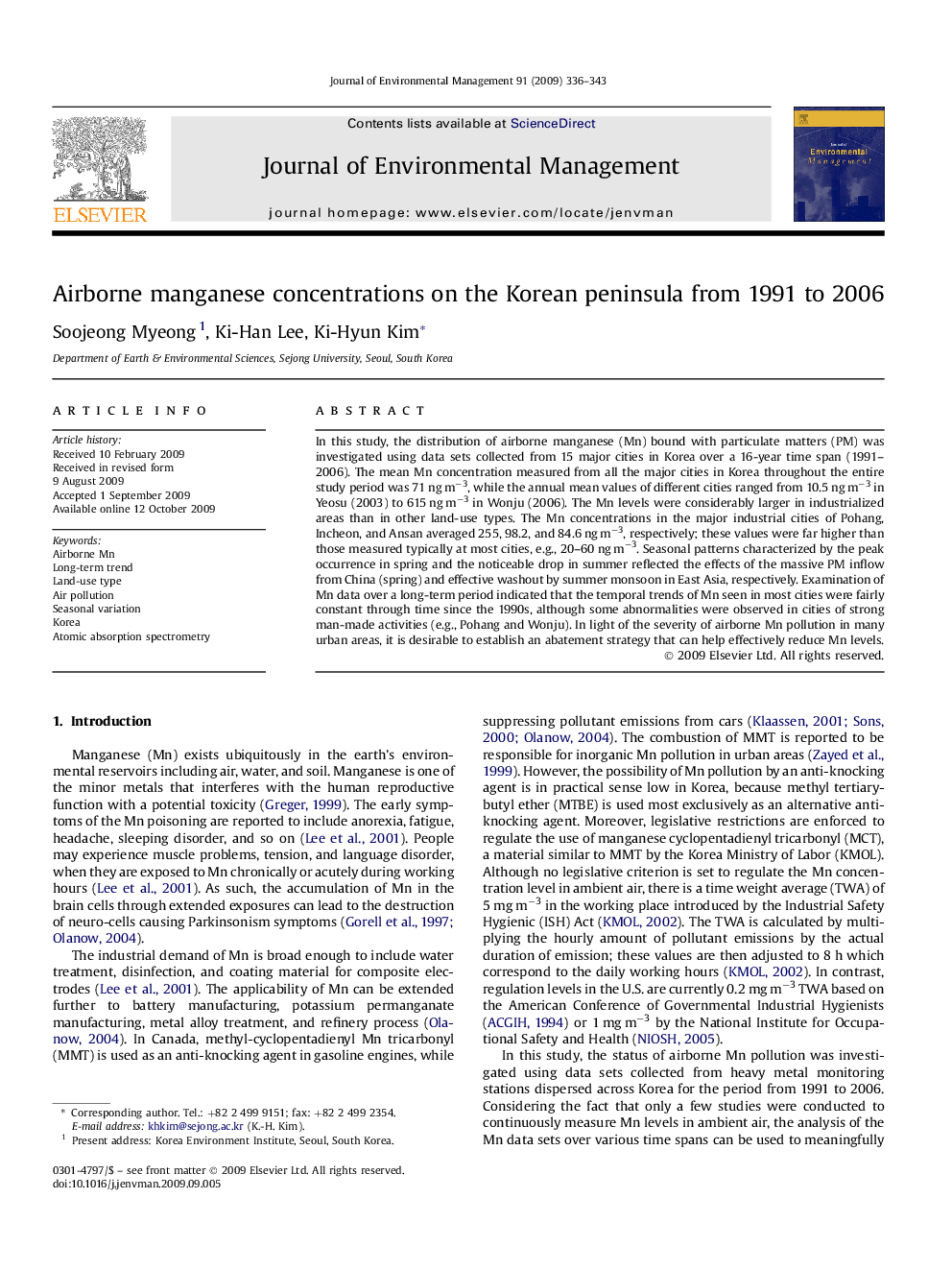| Article ID | Journal | Published Year | Pages | File Type |
|---|---|---|---|---|
| 1057810 | Journal of Environmental Management | 2009 | 8 Pages |
In this study, the distribution of airborne manganese (Mn) bound with particulate matters (PM) was investigated using data sets collected from 15 major cities in Korea over a 16-year time span (1991–2006). The mean Mn concentration measured from all the major cities in Korea throughout the entire study period was 71 ng m−3, while the annual mean values of different cities ranged from 10.5 ng m−3 in Yeosu (2003) to 615 ng m−3 in Wonju (2006). The Mn levels were considerably larger in industrialized areas than in other land-use types. The Mn concentrations in the major industrial cities of Pohang, Incheon, and Ansan averaged 255, 98.2, and 84.6 ng m−3, respectively; these values were far higher than those measured typically at most cities, e.g., 20–60 ng m−3. Seasonal patterns characterized by the peak occurrence in spring and the noticeable drop in summer reflected the effects of the massive PM inflow from China (spring) and effective washout by summer monsoon in East Asia, respectively. Examination of Mn data over a long-term period indicated that the temporal trends of Mn seen in most cities were fairly constant through time since the 1990s, although some abnormalities were observed in cities of strong man-made activities (e.g., Pohang and Wonju). In light of the severity of airborne Mn pollution in many urban areas, it is desirable to establish an abatement strategy that can help effectively reduce Mn levels.
